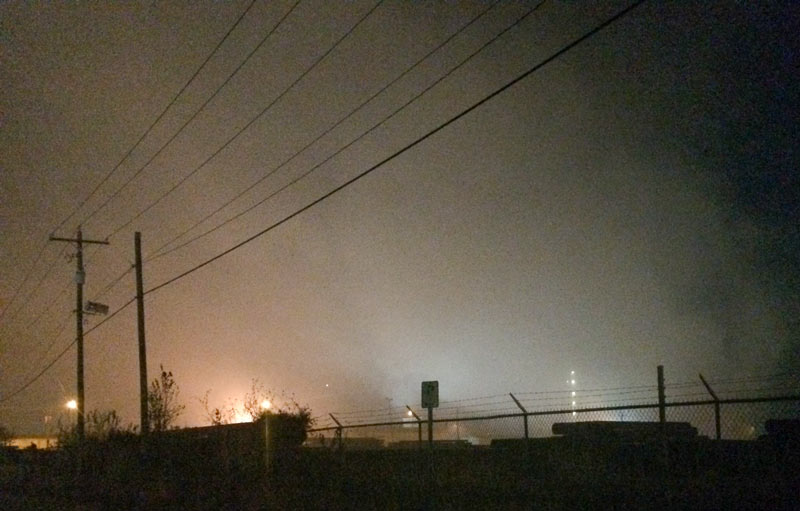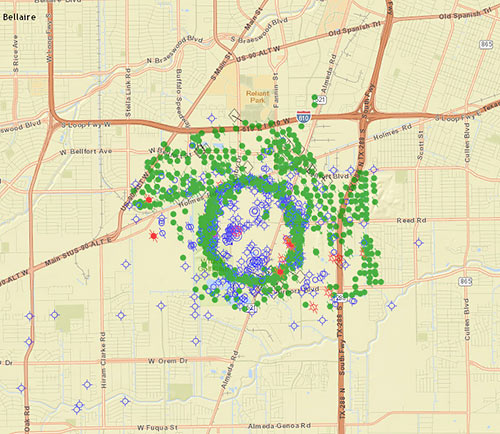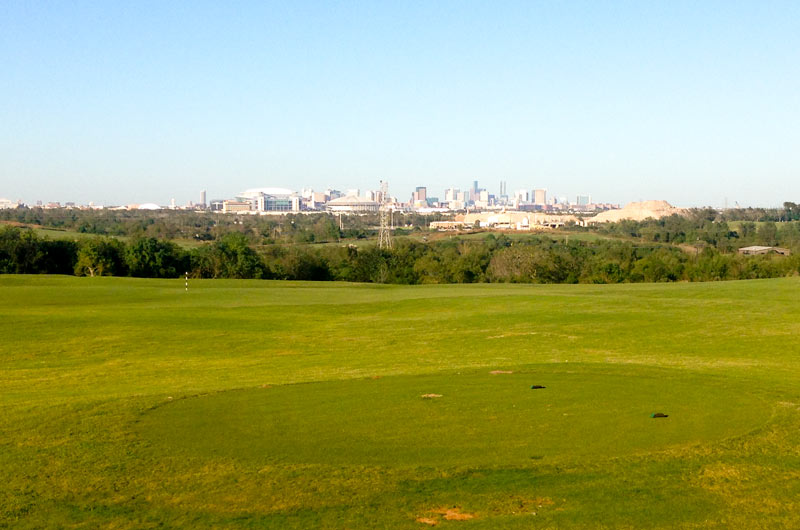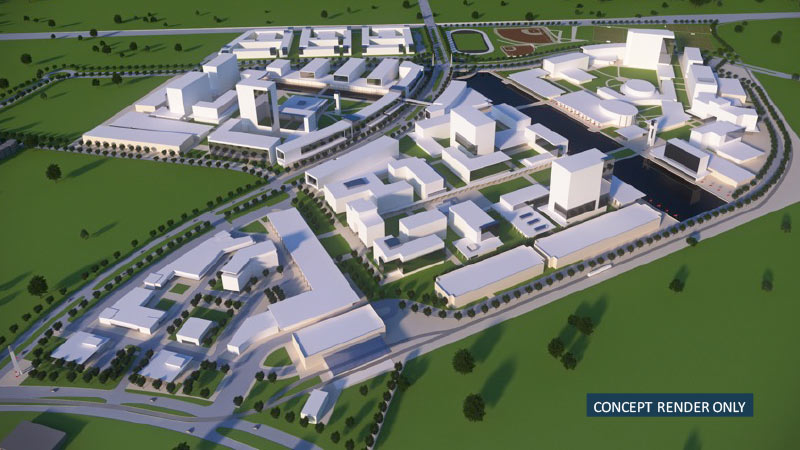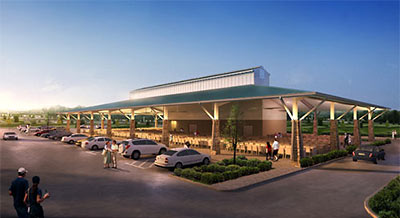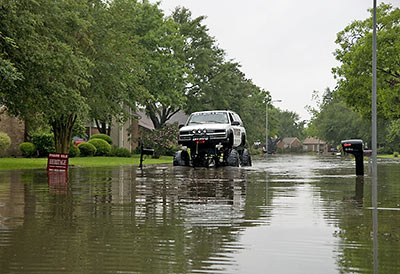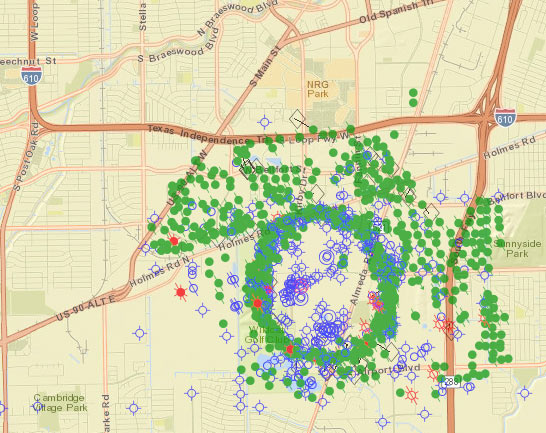
Update, 6pm: UT announced this afternoon that the Houston campus plans are cancelled — more here.
UT system chancellor Bill McRaven objected in letter form this month to senator and Astrodome scrutinizer John Whitmire’s characterization of the 300 acres UT’s been buying in Houston as “a dump,” the Austin American Statesman’s Ralph K.M. Haurwitz reports. Excerpts from the letter assert that the property, nestled amid the industrial-residential jumble south of the Astrodome, has never in fact been a landfill. Sure, there’s a little bit of contamination from an old polymer facility that needs to be mopped up.  And sure, there may be a healthy smattering of old oil wells from the Pierce Junction boom days, as illustrated by the Rail Road Commission’s map of current and former wells drilled in the area. (UT’s new parcels are just inside the crook of the Holmes Rd.-S. Main St. elbow, to the northwest of the ring of wells drilled around the salt dome’s buried upper reaches.)
But Whitmire’s comments, McRaven’s letter notes, might “lead a listener to conclude that the property and the surrounding area are blighted and unlikely to ever be developed. In fact, the property is adjacent to apartments, neighborhoods, and commercial buildings, and it is highly likely that these adjacent developed lands had similar characteristics.â€Â Meanwhile, the Wildcat Golf Course directly across Holmes Rd. from UT’s campus-to-be actually was a bona fide landfill; the only giveaway is all those rolling hills.
- UT System’s $215M Campus Site in Houston Is Not a Dump, Chancellor Says [Austin American Statesman]
- Previously on Swamplot:Â UT Writes Back to UH Pen Pals, Lawmakers on Houston Campus Plans;Â Texas A&M Weighs Houston Expansion As UT Collects Land for Its Planned Campus;Â What That Land UT Bought on Friday for Its Houston Campus Might Have Turned Into Instead;Â The Best Views of the New UT Houston Campus Are Available Now from the Fairway on the 5th Hole, Above a Trash Heap;Â What You’ll Find In and Around UT’s New Houston Campus;Â The Houston Zip Code Where the Kids Don’t Leave Home
Image: Texas RRC Public GIS Viewer


